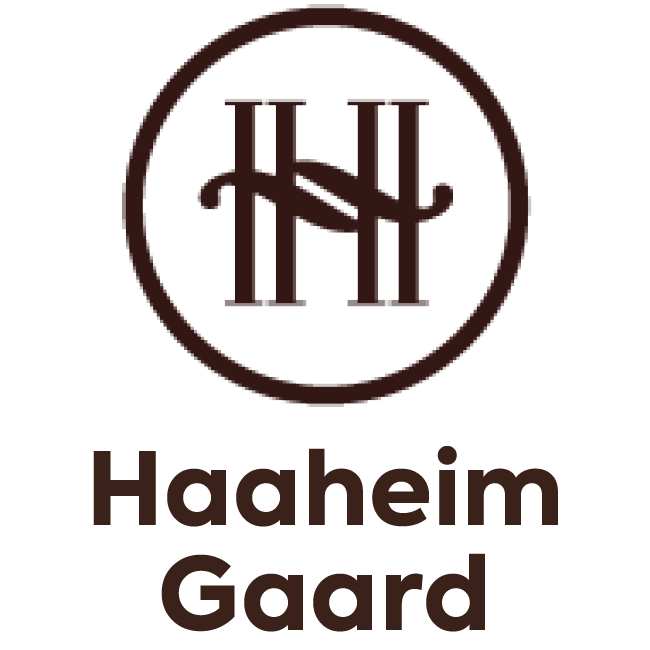Information about climate and environmental work at Haaheim Gaard
Haaheim Gaard wants to contribute to a more sustainable society and therefore takes responsibility for our environmental impact. An important part of the work is to be Environmental Lighthouse certified. This means that we have established an environmental management system that manages climate and environmental work and helps us to achieve continuous improvement. The certification also contains specific requirements that must be met in the areas of working environment, waste, energy, purchasing and transport. Every year we complete a climate and environmental report which gives a good overview of progress and potential for improvement. The report is made publicly available.
To reduce our negative environmental impact, we work both internally in the business and externally with important partners.
We look forward to working together to create a more sustainable society, and especially encourage our suppliers to take greater responsibility for their environmental impact. For example via a third-party environmental certification (Miljøfyrtårn, ISO14001 or EMAS) or in the form of other documentable achievements.
We also want our guests to take part in our climate and environmental work and we encourage you all to travel to us as environmentally friendly as possible with public transport, carpooling, environmentally friendly means of transport or other alternatives that suit you.
What are we going to achieve?
Overall, it is the environmental policy that guides our work:
In our business, a pleasant and safe working environment must be created for all employees. We must comply with official requirements and our own requirements that apply to our business. We must also take care of the company's buildings and materials, prevent strain on the external environment, and our products and services must not harm the guests or the environment. We will be an active driver in the local environment for sustainable development and we will create a good HSE culture within the company that puts the employees, the environment and our guests in focus. We will be a champion of organic food and constantly increase the proportion of sustainable and organic raw materials in our production. These goals must be achieved through continuous evaluations and improvements. Both management and employees must participate actively in the improvement work.
The environmental policy is followed up with concrete targets:
- We will reduce our greenhouse gas emissions by 15%. We will reduce our energy consumption by 15%. Our sickness absence must be below 3%. local and sustainable food. We will take local responsibility with our purchasing policy and invest in local suppliers of raw materials, goods and services. We will map the proportion of organic food. quality, cost and delivery. We shall use raw materials from our own garden to a greater extent. The proportion of raw materials from our own garden shall be mapped. We shall increase the production of raw materials from our own garden by 15%. and we will calculate it in the purchase sum. We will encourage our guests to choose organic alternatives with us and we will market organic foods over other foods. chemical consumption, which must then be set proportionally in relation to guest nights. We will minimize the use of chemicals by 15%. We will continue to use suppliers of chemicals that have environmental labeling and work actively to reduce the burden on the environment. Chemicals must always be assessed according to the points in the purchasing guide .We shall maintain and improve a sustainable garden where no artificial poisons or fertilizers are used and biological diversity is further developed.
20. We must obtain the necessary overview of the company and the HSE laws.
- Obtain an overview of all relevant information about the company. Obtain an overview of the organization and who has responsibility in the HSE area, and implement this in the HSE system. Obtain an overview of the central HSE activities and create an action plan.
21. We shall establish participation and training.
- Lay out a strategy for how everyone can be involved in the HSE work. Uncover the areas where the need for training is greatest with the main focus on the most important points in the Internal Control Regulations. Ensure participation and skills enhancement for all employees in connection with strengthening the HSE system in the company. Carry out tailored courses for managers, safety representatives and other employees in the company.
22. We shall establish routines, checklists and registrations.
- Find the most important and most critical routines for the entire organization and enter them into the HSE system. Develop less critical routines and procedures Review the checklist for safety rounds, and select those that are relevant.
23. We must prepare an overview of agreements, contracts and suppliers.
- Obtain an overview of suppliers of services and enter this in the contact register. Obtain an overview of and ensure the quality of the company's insurances. Obtain an overview of and review agreements that apply to, among other things, fire protection equipment, electrical inspection, maintenance of machines and treatment of various types of waste and any special waste. Obtain an overview and statistics for the purchase of chemicals and focus on minimizing this consumption. Use only environmental beacon-certified suppliers as much as possible.
24. Carry out risk assessment.
- Find where it is most important to carry out an assessment of risk and then carry out a risk analysis of the risk elements that have been found. Document the risk analysis and use it as a starting point for the preparation of better routines, if there is a need for it.
25. Our employees must feel that they have a real say in the company's systematic HSE work and the company's objectives. - Information meetings must be held every quarter to update status. procedures for notification of deviations.




